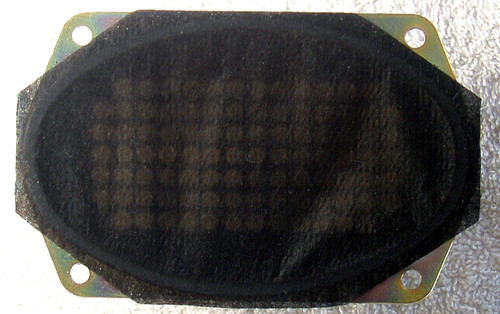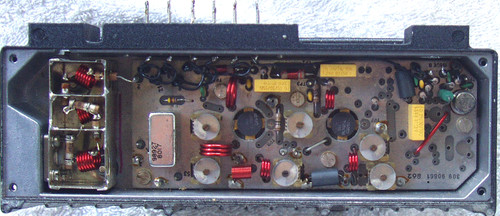This complete, tested FM828 A Band exciter board has been carefully removed from a A type FM828 transceiver.
The exciter module being offered has not been modified (but there is tons of information on undertaking mods and NO SMD to contend with!) and if the transmitter is 'fired up' the user MUST use an appropriate dummy load with good shielding otherwise you could well interfere with services operating in the High VHF frequency range, 146Mhz ~ 175Mhz
It is illegal to interfere with these services and the consequences can be severe!
I have other FM828 series components, boards etc HERE - time to do some experimentation with this nice old analog communications technology!
PHILIPS - RF Exciter PCB/Module
Type: FM828 A Band (Mk2)
Part # 309 92261
Removed from a multi-channel transceiver
146Mhz ~ 175Mhz design frequency range
Analog - not a hint of digital technology in these units!
Dimensions: 170mm x 78mm x 17mm
Weight: 100g
Nicely engineered (the old fashioned way using single sided PCB, discrete components, no SMD) and numerious PCB pins for external connections.
Plenty of manuals, discussion forums online talk about the FM828 (after almost 50 years these things just keep on going!)
COSMETIC CONDITION:
PCB is clean and it doesn't appear to have been 'worked on'
Clear plastic insulation sheet on the solder side of the PCB has been left intact.
All interconnections have been removed, Philips have numbered all the PCB pins and reference to the circuit diagram/board layout will easily show just what goes where.
PLEASE NOTE THAT I AM NOT SUPPLYING ANY CRYSTALS with this module, although I do have one which I am making available separately HERE (for testing) but keep in mind that the crystal offered will transmit up at 173.525Mhz, not 2 metres. I just grabbed the crystal from my 'wizard's box of tricks' so I could at least fire up the board and test it (and the RF PA which is advertised separately)
TESTING:
Immediately prior to carefully dismantling the FM828, I set it up to test the TX side of things using a crystal I found which is 'near enough' for test purposes. Fired up into a dummy load and keyed up the transmitter. All good, full power (25W) at 173.525Mhz.
I have now packed this board into sealed plastic.
So there you have it, yes it's crystal locked but perhaps someone can see potential in this unit - getting it going just for fun or experimentation.














